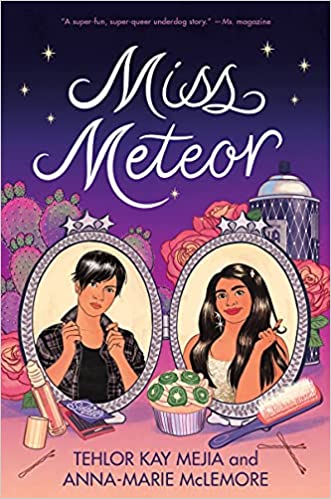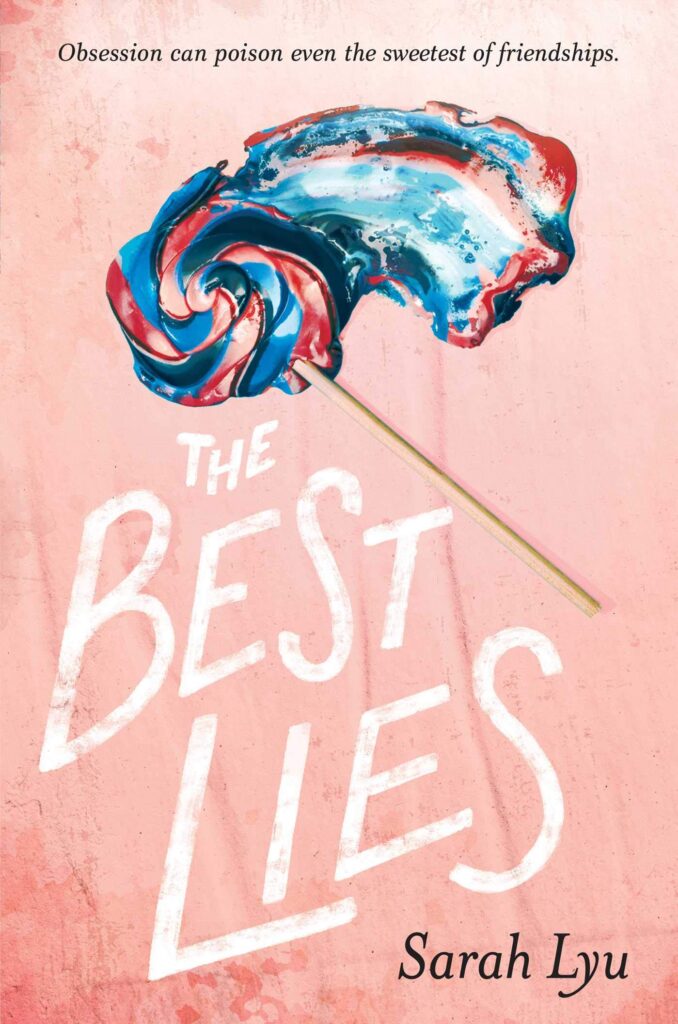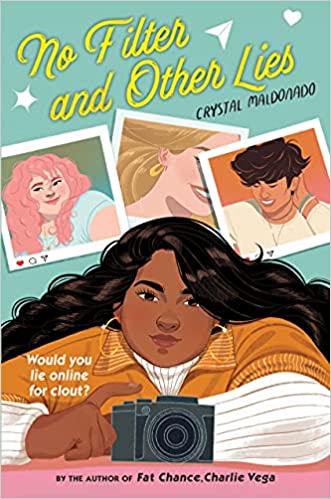Sponsored by Holiday House.
Twenty-one-year-old Max Monroe has it all: beauty, friends, and a glittering life filled with adventure. With tons of followers on Instagram, her picture-perfect existence seems eminently enviable. Except it’s all fake. Max is 16-year-old Kat Sanchez, a quiet and sarcastic teenager—nothing glamorous in her existence! It’s just a matter of time before Kat’s entire world, real and fake comes crashing down around her.
Hey YA Fans!
A common chorus I’ve seen for years is that YA lacks good friendship tories. This isn’t true, though — there are a good number of YA friendship books, including a number of great friendship YA comics.
 |
Among the explorations of friendships include how a friendship changes or evolves (You Should See Me In a Crown by Leah Johnson, Undead Girl Gang by Lily Anderson, We’ll Fly Away by Bryan Bliss, and Miss Meteor by Tehlor Kay Mejia and Anne-Marie McLemore), how it might come to an end (We Used to Be Friends by Amy Spalding and When You Were Everything by Ashley Woodfolk), and what it looks and feels like for a new friendship to spark (Darius the Great Is Not Okay by Adib Khorram and The Black Kids by Christina Hammonds Reed). An area that’s been under explored, though, is the toxic friendship.
What is a toxic friendship? It’s a friendship that’s hot and cold, but where one person wields that heat over the other for their own gain. They might demand certain favors for their friend to keep the relationship going. There may be teasing or belittling that shifts the power dynamic, such that one person in the relationship needs to see the other grovel or pursue that relationship in unhealthy, self-deprecating ways. Any number of scenarios could play out, but ultimately, it’s not a relationship built on mutual trust, respect, and commitment to one another. The signs of a toxic romance apply here — so much of what makes a romantic relationship work are the same elements of a strong friendship. The same goes for destructive ones.
I started this newsletter with the intentions of a book list and pooled together a list of books featuring toxic friendships in YA. But then something a little more frustrating struck me: every single book I found featured female friendship that turned toxic. I looked for a long, long time, as well as sought out the help of other YA readers (including Tirzah). We were able to come up with some “maybe sort of” titles, including the just-released The Chandler Legacies by Abdi Nazemian. More than once, a title would come up that might fit the bill, but what stood out was that most of those titles featured one of the male characters having romantic feelings for his friend. That might change a friendship, but that shift doesn’t make that relationship toxic (and in some cases, that budding romance is more implicit in the text than it is explicit–compare, for example, Darius the Great is Not Okay and Aristotle and Dante Discover the Secrets of the Universe).
But why is toxic male friendship missing in YA?
Gender certainly plays a role here, given the belief girls are much more emotional and emotionally invested in their friendship than boys. YA, though, has become more broad in understanding the range of human emotion and the nuances of gender in the last half decade, and yet, there’s still far more focus on the good and bad of female friendship that on male. That’s not to say there aren’t books in YA featuring male characters — there certainly are and the numbers haven’t decreased — but the range of experiences those male characters are allowed to have is narrower than those for their female counterparts. It’s important girls have the capacity to work through challenging relationships, but when there’s such a divide on an experience that’s not gender-specific, it’s hard not to read into it. . . and not just because boys don’t have toxic friendships. It links toxicity to female friendship exclusively, playing into the mean girl/not like other girls/better than other girls tropes that mar other forms of media.
And why is it when a male friendship is tested, more times than not it’s because of potential romantic feelings, as opposed to actual toxic behaviors.
I don’t have answers and I won’t pretend to have any.
It’s impossible not to address this is binary in thinking about gender and YA, but given that YA is still primarily binary in gender representation, there’s not been enough titles featuring trans, genderqueer, agender, and other non-binary identities to notice any trends. This binary view, though, is stark.
 |
More, when we do look at this through the binary lens, we see just how small the boxes we allow male and females to exist in. Girls have far more toxic friendships than boys do. Friendships matter far more to female characters than to male ones. The moment that any potential romantic feelings emerge in a male friendship, it becomes the catalyst to a story, as opposed to a means of understanding the complexities of a friendship more broadly (we see this in YA female friendships, that line between platonic and romantic blurring, shifting, and erasing).
I’m hopeful as we see more diverse gender expression in YA that we can allow male-identifying characters to break down the sides of those boxes they’re in, too, and offer more complex, challenging, and compelling friendship narratives–including ones that are toxic.
Make sure to get your own Read Harder Book Journal from Book Riot to track your reading for the year!
*
It’d be unfair to leave this collection of thoughts without any sort of book list, so a quick list of some of the titles I’d pulled together featuring toxic friendship in some capacity (it might be central to the story or might be a significant relationship that happens over the course of the book). It’s diverse, and yet, the gender dynamics here are clear:
- Bad Girls with Perfect Faces by Lynn Weingarten
- The Best Lies by Sarah Lyu
- The Nowhere Girls by Amy Reed
- Tell Me Again How a Crush Should Feel by Sara Farizan
- Tiny Pretty Things by Dhonielle Clayton and Sona Charaipotra
Don’t forget you can get three free audiobooks at Audiobooks.com with a free trial!
Thanks for hanging out again this week. We’ll see you on Thursday with your YA book news and new books.
Until then, happy reading!
— Kelly Jensen, currently reading All The Right Reasons by Bethany Mangle which has a really great female friendship in it.
